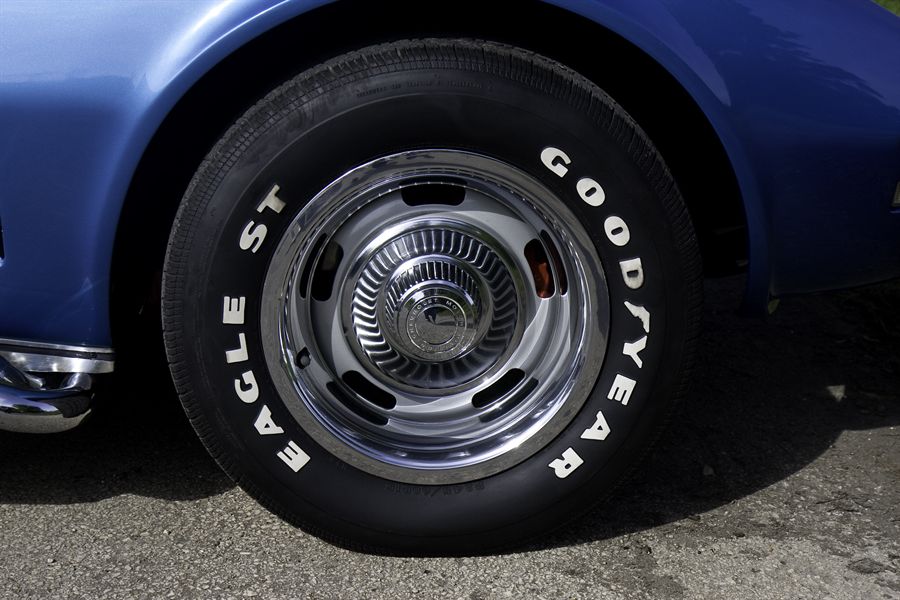Restore An Old Corvette
As the all-American sports car, Corvettes are in a category all their own. There is no other production car that comes close to it in terms of enthusiast interest, collectability, and iconic status.
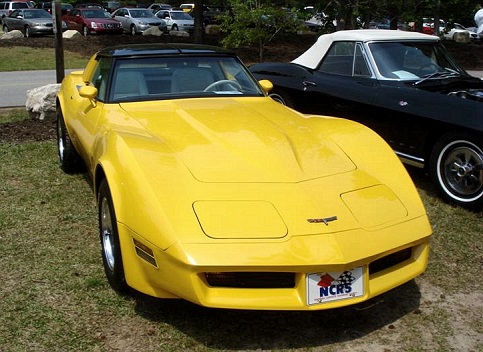
What Year Corvette Is Best To Restore?
When you factor in driveability, initial cost, and availability, any 3rd Generation Corvette (1968-1982) is a top candidate for restoration.
************************
1968 Corvette
Modeled after Chevrolet's Mako Shark 2 show car, the fiberglass-bodied two-seater rolled on same chassis as the 1963-1967 models, with only minor modifications.
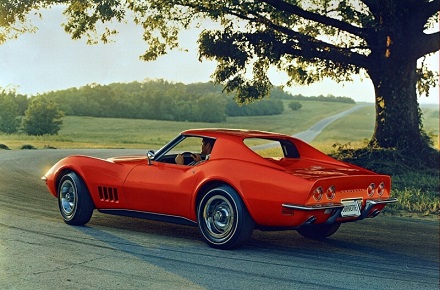
The new body required changing the height and position of the body mount brackets, which are on either side of the frame. For additional strength, angled channel brackets were added from the inside of the frame rails to the top of the differential carrier front cross-member.
1969 Corvette
Flush-mounted door handles and body chrome distinguished the 1969 Corvette from the 1968 model. Complying with a federal mandate, the ignition switch, previously dash-mounted, was now incorporated into the steering column lock assembly. Handling was improved by stiffening the frame and increasing standard rim width to eight inches.
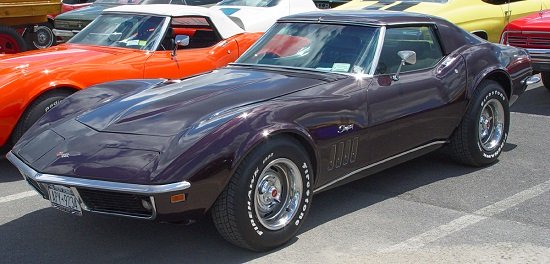
Chevy's small-block V-8 got an increase in displacement, from 327 to 350 cubic-inches. By increasing stroke length, torque was increased, although horsepower remained the same.
Big-block engine options ranged from 390 to 435 horsepower. The special aluminum-head L-88 engine, costing an optional $1,032, was available for a second and final year.
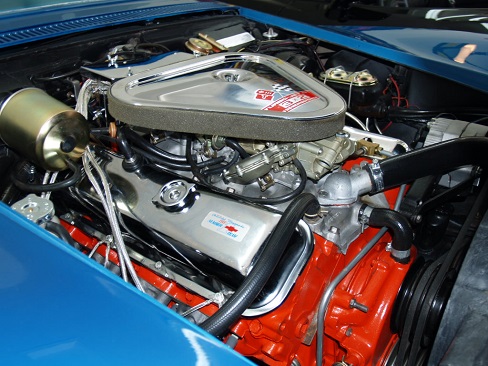
1969 would be the last year for multi-carb motors.
To make up lost time due to a worker's strike earlier in the year, Chevrolet extended production two extra months. 1969 would be the best sales year yet, with 38,762 units, beating last years production total of 28,566.
1970 Corvette
A minor front makeover included a revised grille and side vents. Front turn-signal lights were now square, with rear exhaust tips changed from round to rectangular.
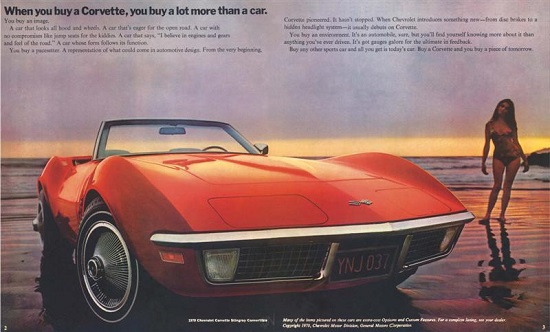
The wider eight-inch wheels from last year were found to cause stone damage on the back edges of the wheel openings. To prevent this, flares were added to the rear portion of the fenders.
454 Big-Block
Chevy's 427 motor received an increase in stroke length, from 3.76 to 4.0 inches, now displacing 454 cubic-inches. Cylinder bore remained at 4.25 inches.
The LS5 big-block, topped by a single four-barrel, produced 390 horsepower with 500 lb/ft of torque. Also offered was the LS7, which had 11.25:1 compression, making 460 horsepower and 490 lb/ft of torque.
************************
Seventies Vettes
During the sixties in America, gasoline was cheap, motors were big, and few people worried about economy. Early third-gen Vette's were powered by the biggest and most powerful engines of the Muscle Car era. But it would be short-lived - insurance premiums, emission laws, and safety concerns came about, and the Corvette would soon begin a slow transformation from ground-shaking bruiser to world-class sports car.
1971 Corvette
In order to comply with new emissions standards, GM reduced compression ratios on all engines. The base Corvette 350ci engine dropped from 10.25:1 to 8.5:1 CR, with horsepower dropping from 300 to 270. The LT-1, still red-lining at 6500 rpm, produced 330-horsepower. All engines now ran on lower-octane unleaded fuel.
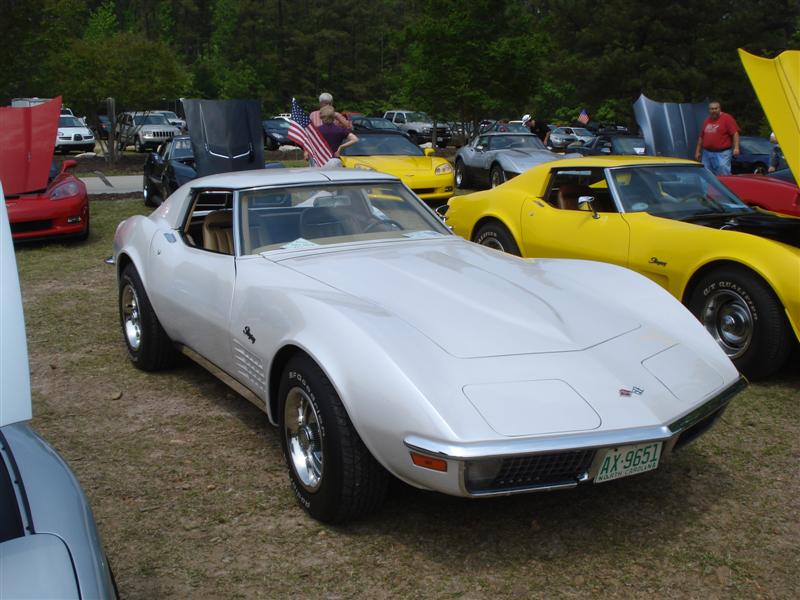
1971 Corvette gas mileage was in the 9-15 mpg range.
1971 was the last year Chevy's Big-Block motor made big power. The 454 LS6 produced 425-horsepower with 475 lb-ft of torque, with the LS5 version making 365-horsepower and 465 lb-ft of torque.
1972 Corvette
Prior to 1972, published horsepower ratings were expressed as SAE (Society of Automotive Engineers) Gross. These figures reflected an engine's output without power-robbing accessories, such as cooling fan, exhaust system, and alternator. Starting in 1971 and going industry-wide in 1972, engine output was expressed as SAE Net, with horsepower measured at the rear wheel. The result was lower advertised horsepower ratings.
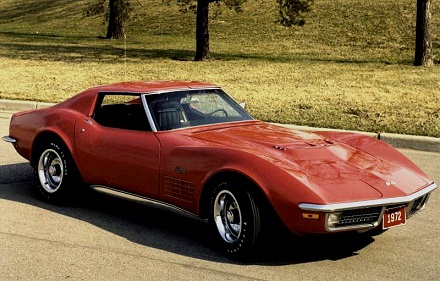
With emission regulations and no-lead gas already bringing about lower compression ratios, Corvette's standard 350ci motor was rated at 200 horsepower. The LT1 350, now red-lining at 5600 rpm, made 255 horsepower. The LS5 454 was the sole big-block offered, putting out 270 horsepower.
This was the final year for front and rear chrome bumpers, as well as the last year of removable rear window glass in the coupes. With the uncomplimentary distinction of being the most stolen car in America, Corvettes were now equipped with an anti-theft alarm.
1973 Corvette
1973 saw the first major restyle since 1968. With a new federal law requiring all cars to sustain a five-mph front impact without damage, twin chrome bumpers were replaced with an injection-molded urethane cover, painted the same color as the car. Rear bumpers would remain chrome for one more year.
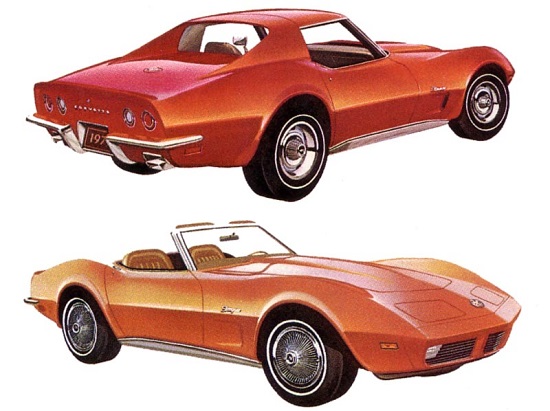
A new hood design allowed cowl air induction, and also eliminated the troublesome cowl-panel that raised and lowered for the hide-away windshield wiper operation.
The Corvette's frame, in use since 1963, received minor modifications. Body mount brackets were lowered slightly to allow use of thicker body bushings. After several years of testing, including racetrack wins, 1973 models were fitted with radial tires. Additional sound insulation was applied throughout the body.
The 1973 Corvette weighed in at 3,725 pounds - just four years earlier, it weighed 3,260 pounds.
1974 Corvette
1974 was the first year of the urethane-molded rear bumper assembly. It was the only year of the visible 'split bumper' with a seam running down the middle.
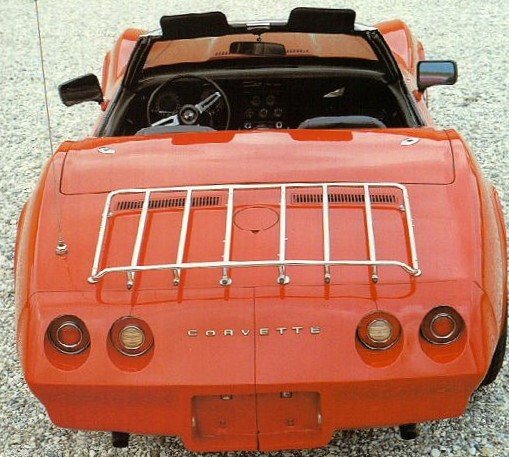
For car enthusiasts, there weren't many good times in 1974. The OPEC oil embargo deepened, and in an effort to conserve fuel, President Nixon signed legislation making 55-mph the national top speed limit. The Daytona 500 race was shortened due to the energy crisis.
1975 Corvette
In order to comply with EPA (Environmental Protection Agency) regulations, all cars sold in North America required catalytic converters. Corvettes from 1975 through 1982 were fitted with "2 into 1 into 2" exhaust systems.
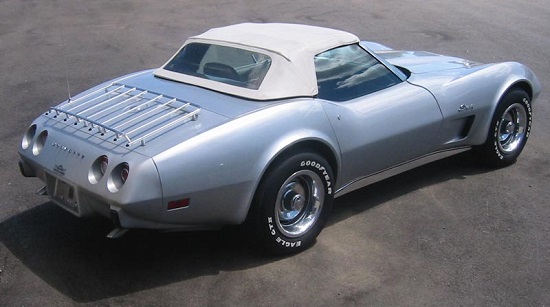
Although government rollover standards banning convertibles is often cited, it was declining sales that prompted Chevrolet to drop the Corvette ragtop at the end of 1975. Of the 38,465 Corvettes built this year, 4,629 were convertibles.
Horsepower ratings bottomed out at 165 horsepower in 1975. This was the lowest performance Corvette since the 1953-1954 models, but emissions were just one of the reasons for that. Keep in mind that car manufacturers were just starting to learn how to get power out of engines with reduced compression and running on unleaded gas. In spite of all this, the 1975 Corvette was still one of the fastest cars available at the time.
1976 Corvette
To reduce interior temperature caused by the catalytic converter, fiberglass front floor sections were replaced with a more rigid steel sub-section. After early leakage problems, styled aluminum wheels were finally available, and installed on 6,253 Corvettes this year.
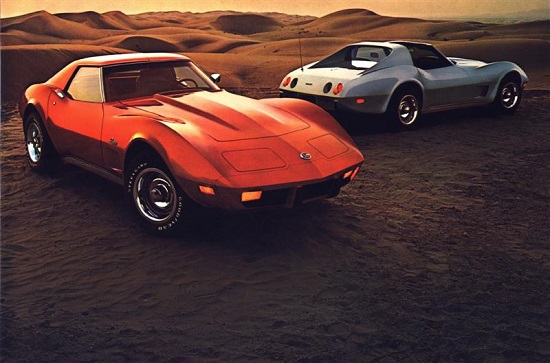
A new sport steering wheel, smaller than previous ones, was offered as an option. Because it was the same wheel used on Chevy's Vega, owners voiced complaints and was dropped from the option list after year's end.
At 8.5:1 compression ratio, the base 350 small-block engine produced 180 horsepower. The optional L82 small-block motor had 9.0:1 CR and put out 210 horsepower.
Production totaled 46,558 units in 1976. The increase in sales was helped in part to a recovering market, but also from shrinking competition in the Corvette's price and performance class. There were far fewer performance cars of any kind by 1976, which certainly helped renew Corvette sales.
1977 Corvette
The Corvette was slowly evolving into a refined two-seat cruiser. Leather seat trim, previously available at additional cost, was now standard, with cloth trim optional. Power steering and power brakes became standard, and cruise control was offered for the first time. Padded sun-visors now swiveled to cover the side windows.
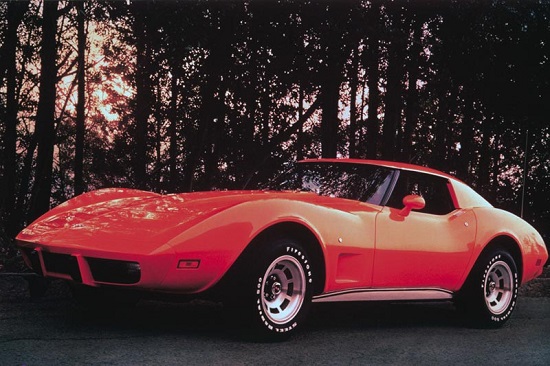
Base and optional engines remained the same as last years. Engine paint color was changed from orange to blue, although some early production 1977 Corvettes were built with the orange-painted engines.
In March of 1977, the 500,000th Corvette rolled off the assembly line. Yearly production rose again to 49,213.
Although the tire-shredding power from a decade ago was gone, mid-seventies Vettes still had a lot to offer. It was more efficient and better-handling than ever, with four-wheel independent suspension and four-wheel disc brakes on every model. And they still turned heads.
1978 Corvette
For 1978, a new roofline and fastback not only added looks, but increased visibility and luggage space as well. Slight performance gains were seen through use of a lower restriction exhaust system and dual-snorkel air cleaner. The addition of a glove-box was a welcome interior upgrade.
To commemorate it's twenty-fifth year in production, special emblems adorned the nose and deck on each of the 47,667 Corvettes manufactured in 1978. Two Limited Edition models were offered, the Pace Car replica and the Anniversary Edition.
1978 Indy Pace Car
Since its very first running in 1911, the annual Indy 500 race had a pace car to lead the race cars around the first lap. The first Corvette pace car was 1978.
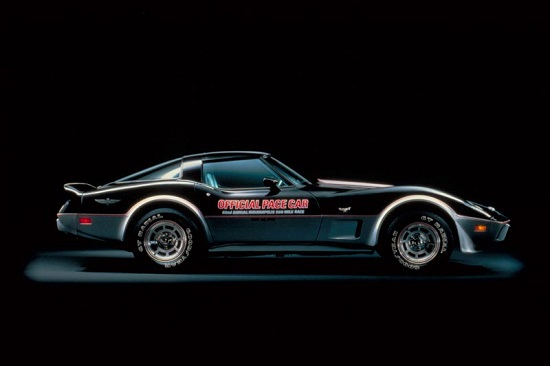
Corvettes have paced the Indy 500 more than any other car.
Originally intending to build only 2,500 Indy pace car replicas (a hundred for every year of production), Chevrolet eventually built a total of 6,200, one for each dealership. The Corvette pace car featured special black-over-silver paint, alloy wheels, raised-white-letter Goodyear tires, and front and rear spoilers. Exterior decals were installed by the dealer at the owner's request.
1978 Anniversary Edition
The second Limited Edition for 1978 was the two-tone, silver-over-grey Silver Anniversary model.
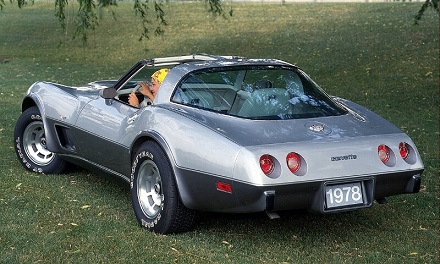
Raised-white-letter tires and alloy wheels were standard, as was a color-matching silver interior. Tinted glass roof panels, optional on regular models, were standard on both Limited Edition models.
1979 Corvette
Model-year 1979 started Corvette's three-year weight-loss diet. Weight reducing measures included thinner, lighter seats, and the use of more plastics. Standard equipment now included an AM/FM radio and seat-backs which folded forward, helping access storage space. All models were fitted with anti-theft steering column ignition locks. Bolt-on spoilers were optional.
Other new features for 1979 was a dual-snorkel air induction air cleaner and lower restriction exhaust, which boosted power slightly. Model years sales totaled 53,807 and was the highest production of third-generation Corvettes.
************************
Early Eighties Vettes
Although not as valuable nor as fast as a C2 or early C3, early 80's Corvettes are fun and affordable, and if you restore one to factory stock, it will increase in value.
1980 Corvette
A redesigned front-end included an integral air dam and three-piece spoiler, which improved radiator airflow and lowered the car's drag coefficient from 0.50 to 0.44. A rear spoiler was built into the redesigned back panel. Air conditioning, power windows, and tilt-telescopic steering wheel were now all standard equipment. Cornering lights appeared on the front fenders.
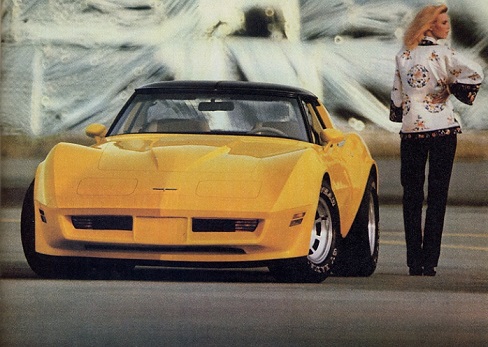
Engineers found ways to lose nearly 250 pounds off the car, such as switching from cast-iron to aluminum on the intake manifold and differential housing. At 3,495 pounds, it was the lightest Corvette since 1968.
Goodyear Eagle high-performance radial tires became optional, starting a three-decade relationship between Chevrolet and the Ohio-based tire company. Despite improvements, sales dropped to 40,614 units.
1981 Corvette
The U.S. oil crisis of the Seventies and ever-increasing emissions laws made fuel efficiency a priority. 1981 marked the beginning of computer-run engines, providing better fuel metering and driveability.
The Corvette was one of the first GM models equipped with the new Computer Command Control system. In contrast to the old days with seemingly endless engine choices, there was only one engine offered, the L81 350ci small-block V-8 producing 190 horsepower.
Further weight reduction was seen by replacing the steel rear transverse spring with one made from reinforced plastic. Manual-shift models kept the multi-leaf steel spring, as did those with the optional Gymkhana suspension. New stainless-steel free-flowing exhaust manifolds weighed 14 pounds less than the previous year's cast-iron manifolds.
Standard items now included air conditioning, power windows, push-button AM/FM radio, leather wrapped tilt/telescoping steering wheel, and a luggage security shade. Goodyear Eagle GT tires on steel wheels, sized at 255-70-15, were standard, with 255-60-15 Eagles fitted to the optional alloy wheels. Power door locks, six-way power drivers seat, glass roof panels were other popular options.
Sales for 1981 model year were 45,631.
************************
Bowling Green Plant
In June of 1981, Corvette production transferred from St. Louis to Bowling Green, Kentucky.
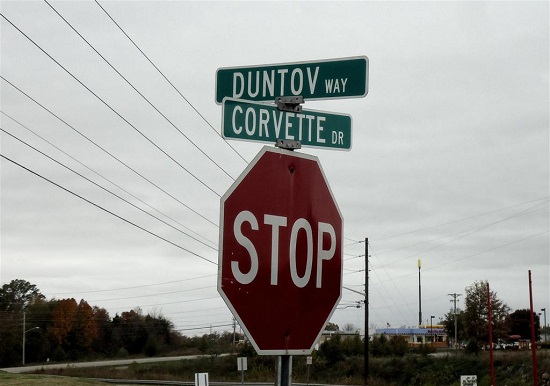
The new state-of-the-art facility, covering 212 acres, was a giant step in reversing the car's reputation for sub-standard quality finish. Lacquer paint was phased out, with all Corvettes now finished in durable two-stage enamel.
1982 Corvette
Increased pollution regulations, along with rising gasoline prices, led to Chevrolet's return to fuel-injected motors in 1982. The 350ci L83 Crossfire motor featured two cross-mounted throttle-bodies, one for each bank of cylinders.
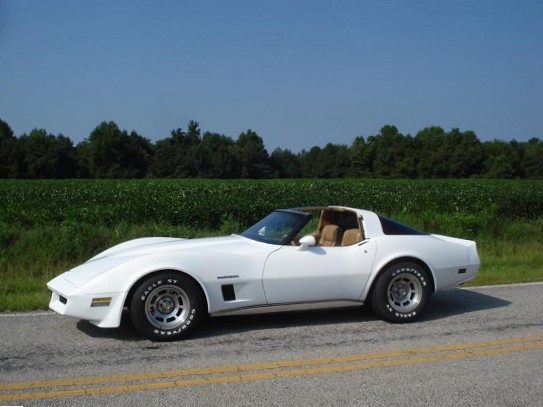
A cross-ram intake manifold was designed to quicken the velocity of the air/fuel mixture ratio. Computerized metering helped boost horsepower while also lower emissions.
Corvette Crossfire Maintenance and Diagnosis
1982 Corvette Fuel System
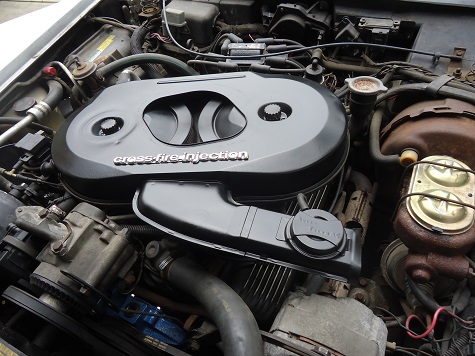
An on-going dispute between Chevrolet and Borg-Warner, combined with the all-new 4th-generation Corvette due out the following year, prompted Chevrolet not to offer any transmission options this year. GM's new 700R automatic transmission was installed in all 1982 Corvettes.
Not only did the four-speed overdrive unit help achieve the quickest acceleration times since 1974 models, it also gave the best fuel mileage yet.
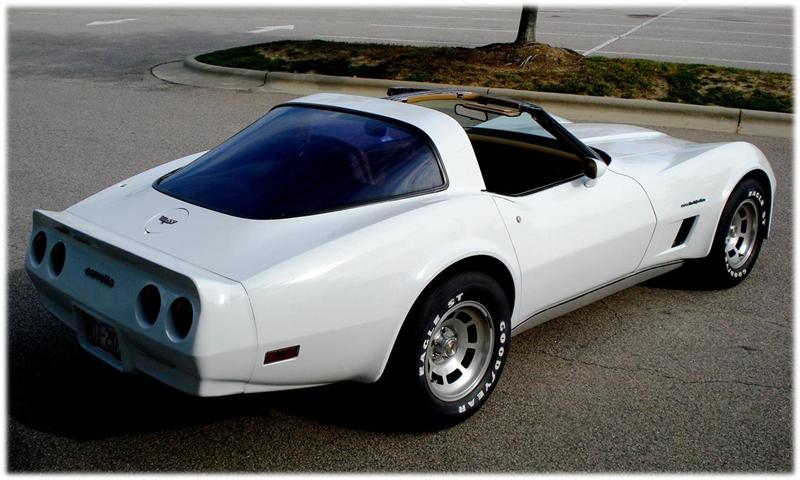
Read: 1982 Corvette Restoration
************************
Notes and Misc
Just like any Classic Harley-Davidson, a restored Corvette will only go up in value.
There's a great aftermarket for classic Corvette parts, and third-generation models are the most popular. Replacement brakes, steering, and suspension parts are readily available.
***********************
Brake System
Patterned after the Grand Sport Corvette race cars of the early sixties, four-wheel disc brakes were standard equipment on 1965 through 1982 Corvettes (although some early 1965 models were sold with drum brakes).
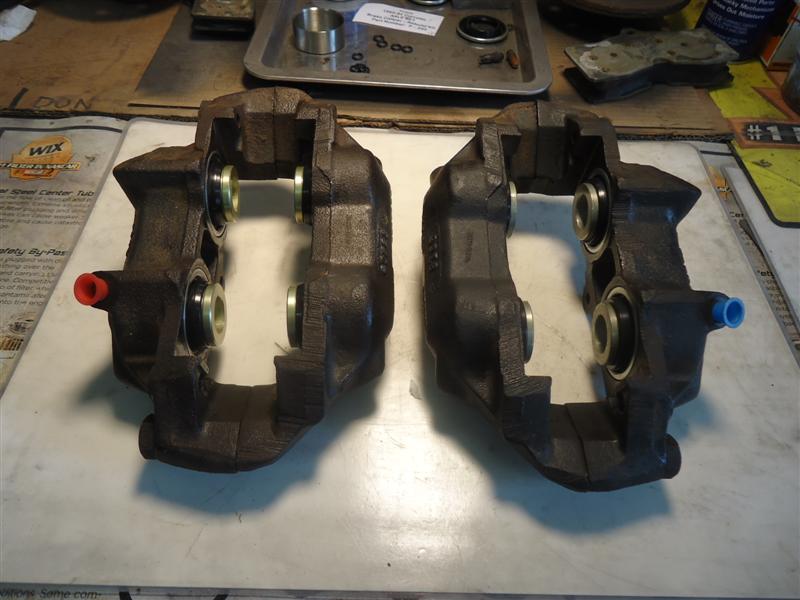
Rebuild Corvette Calipers
Rebuild Corvette Calipers (Reassembly)
Lip Seal vs O-Ring Calipers
Removing Riveted Brake Rotors
************************
Steering System Overhaul
Power steering was an option on Corvettes from 1963 to 1976, and became standard equipment in 1977. Although the pumps and gearboxes changed several times, the power steering control valve and cylinder remained pretty much the same.
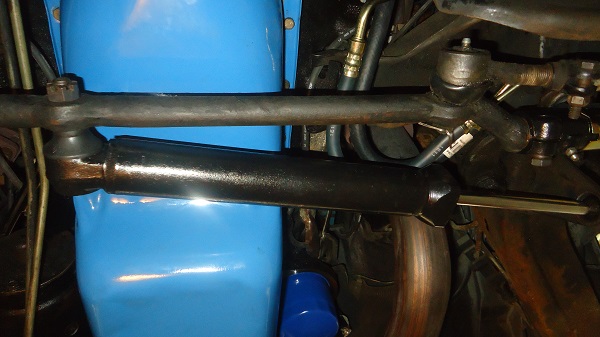
How To Rebuild A Steering Cylinder
Procedures for replacing the four P/S hose for 1963-1982 Corvettes are virtually the same.
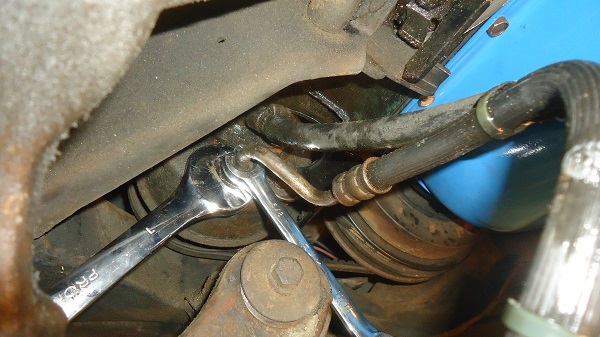
P/S Hose Replacement (C2 and C3)
Tilt-Telescope Steering Column Repair
************************
C3 Corvette Engine and Exhaust
327 Chevy Build
Best Heads For Gen-1 SBC
Best Oil For Classic Cars
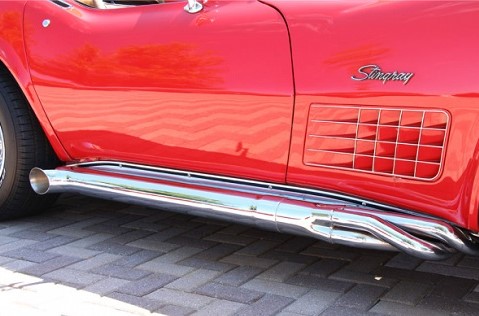
Read: C3 Corvette Exhaust
